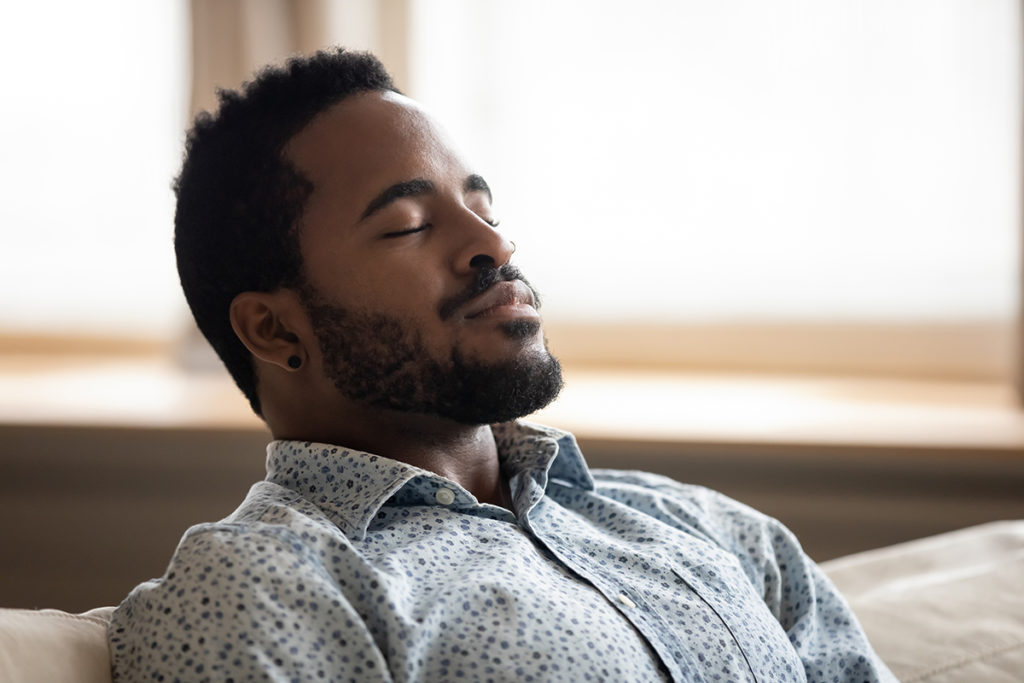Read the latest and greatest from our team
of incredible specialists.

Beach House Recovery Center » Blog » Grounding Techniques for Anxiety
Getting caught in an anxiety spiral can feel overwhelming, as one worry stacks upon the next. You may start feeling panic attack symptoms such as a racing heart, sweating, shaking and shortness of breath. When your mind is racing, having a few grounding techniques in your pocket can help calm you down quickly and restore your sense of normalcy.

Grounding requires you to focus on what is happening in the moment, instead of feeling trapped by worries about the future or regrets about your past. Whenever you feel anxious or panicky, it’s a sign that your body’s innate fight-or-flight response has gone into overdrive. When this happens, you are essentially overreacting to a perceived threat.
If you start thinking about something stressful, a region of your brain called the amygdala goes into action, initiating changes such as muscle tension and shallow breathing. Somewhat paradoxically, these changes can be stressful in and of themselves because they can make you feel physically and emotionally overwhelmed. Thankfully, you can use grounding to break the cycle and divert your attention.
Here are a few grounding strategies to try. It’s wise to practice them before you get caught up in an anxiety spiral so they will begin to feel familiar. Next time you’re overwhelmed, you can immediately start implementing the technique that works best for you.
Sit in a comfortable chair and put your feet flat on the floor. Close your eyes and take a few deep breaths. Bring your full focus to the physical sensations of sitting in the chair. How does the seat support your body weight? Touch the chair’s material and notice its texture. What adjectives would you use to describe it?
Next, push your feet into the ground. Imagine the anxiety draining from your mind, down your body and out through your feet into the floor. As the nervous energy leaves your body, progressively relax your muscles and let your body go limp into the chair. Notice how much lighter you feel.
Your imagination is a powerful tool. Guided imagery can help relax your body and mind simultaneously. If you like to daydream, this grounding technique could be ideal for you. With the help of a recording, a therapist or your mind’s eye, envision the most relaxing scene you can.
For example, you might choose to picture yourself strolling down a private beach at sunset. Imbue this vision with as much detail as you can think of – the breeze through your hair, the sound of the waves along the shoreline, the feel of warm sand on your bare feet. Guided imagery helps promote a profoundly tranquil state, while distracting you from the source of your anxiety.
Sometimes, you may find you’re too keyed up from anxiety to achieve the focus necessary for the two grounding techniques described above. In that case, you might benefit from releasing your built-up tension before trying to relax and clear your mind. Try a vigorous physical activity to get that nervous energy out – go for a brisk walk around the block, run up and down the stairs or put on some high-tempo music and use it to motivate you to do household chores. Once you’ve worked out some of your physical tension, you can return to trying grounding techniques that require you to sit still and quiet your mind.
There’s a definitive link between anxiety and substance abuse disorders. Simultaneously treating both parts of a dual diagnosis is essential for finding relief and getting your life back on a healthy track. At Beach House, we have created one of the nation’s leading dual-diagnosis treatment centers. Discover our unique difference by exploring our amenities and reaching out to our admissions counselors today.
Whether you’re researching for yourself or a loved one, Beach House can help. We understand that this is a serious time in your life and that the treatment center you choose matters. We want you to feel comfortable and empowered to make the right decision for yourself, a friend, or a family member. This is why a counselor is waiting and available to answer your questions and help put your mind at ease regarding the next steps. Many of the staff at Beach House have walked in your shoes. If you feel you’re ready or want more information about how to help a loved one, we can help today. You can also learn why we are voted the #1 rehab for addiction treatment in Florida.
We accept most major insurance plans and can verify your benefits quickly and confidentially.
We’re committed to helping you access the care you need, our admissions counselors can guide you through your coverage options and available resources.





"*" indicates required fields